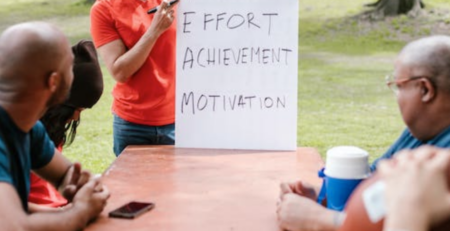Top Platforms for Freelance Designers
In today’s fast-paced and ever-evolving digital landscape, the demand for innovative and creative design solutions is at an all-time high. Businesses across various sectors are increasingly turning to freelance designers to infuse fresh ideas and perspectives into their projects. This shift has led to the rise of numerous platforms that cater specifically to freelance designers, offering them opportunities to showcase their skills, connect with potential clients, and manage projects efficiently.
For businesses aiming to transform their design teams, partnering with a creative staffing agency like icreatives staffing is essential. These platforms offer access to a broad array of talented freelance designers and come equipped with tools that enable smooth collaboration and effective project management. By utilizing these resources, companies can boost their creative capabilities and achieve outstanding results.
One of the primary benefits of using platforms for freelance designers is the ability to tap into a global talent pool. Companies are no longer restricted to local talent; instead, they can find the perfect fit for their project from anywhere in the world. This diversity brings with it a range of creative ideas and techniques, enriching the design process and output.
Moreover, these platforms often include built-in features for communication, payment, and feedback, making the process of working with freelancers more streamlined and transparent. This is particularly beneficial for design teams that need to manage multiple projects simultaneously, as it allows for better scheduling and resource allocation.
However, with the plethora of platforms available, it can be overwhelming to determine which ones best suit a company’s specific needs. Factors such as the type of design work, the level of expertise required, budget constraints, and project duration all play a role in selecting the ideal platform.
This comprehensive guide aims to explore the top platforms for freelance designers, offering insights into their unique features and how they can help revolutionize your design team. Whether you’re a startup looking to build your brand or a large corporation seeking innovative design solutions, understanding these platforms will equip you with the knowledge to make informed decisions.
Additionally, we’ll delve into the most frequently asked questions about these platforms, providing you with a deeper understanding of how to maximize their potential for your business. From the benefits of hiring freelance designers to tips on managing remote creative teams, this guide covers all the essential aspects to help you navigate the world of freelance design platforms effectively.
By the end of this article, you’ll have a clear picture of how to leverage these platforms to enhance your design capabilities, streamline your processes, and achieve outstanding creative outcomes. So, let’s dive into the world of freelance design platforms and discover how they can transform your design team and propel your business to new heights.
Most Asked Questions About Freelance Design Platforms
- What are the top platforms for freelance designers and what unique features do they offer?
- How can businesses effectively manage and collaborate with freelance designers remotely?
- What are the benefits of using freelance designers through online platforms compared to traditional hiring?
- How do these platforms ensure the quality and reliability of freelance designers?
- What are the cost implications of hiring freelance designers through these platforms?
- How do freelance platforms handle issues like confidentiality and intellectual property?
- What trends are shaping the future of freelance design platforms?
Top Platforms for Freelance Designers and Their Unique Features
When it comes to sourcing top-tier freelance designers, several platforms stand out due to their robust features and extensive networks. Upwork is a popular choice for many businesses, offering a wide range of freelancers from graphic designers to UX/UI specialists. The platform provides detailed freelancer profiles, client reviews, and a secure payment system, making it easy to find and hire the right talent.
Behance, another leading platform, is not only a place to hire freelancers but also a social network for creatives. It allows designers to showcase their portfolios, making it easier for businesses to assess their style and quality of work. Behance’s project display format is particularly useful for evaluating a designer’s capability in handling similar projects.
Dribbble is favored for its vibrant community of designers and its focus on visual inspiration. It is an excellent platform for finding high-quality designers who specialize in creative and artistic visuals. Dribbble’s invite-only model ensures that only top-quality designers are part of the community, providing businesses with access to vetted professionals.
Each of these platforms has its unique set of features designed to cater to different business needs and project requirements. Whether it’s the comprehensive search and filter options of Upwork, the community and portfolio features of Behance, or the high-quality and exclusivity of Dribbble, businesses can choose the platform that best fits their specific needs.
Understanding these platforms’ distinct features helps businesses not only in choosing the right place to find freelancers but also in leveraging these features to enhance their design projects. For instance, Upwork’s work diary feature allows clients to monitor hourly contracts, ensuring transparency and trust. Behance and Dribbble, with their strong emphasis on visuals, are perfect for projects where design aesthetics are paramount.
Moreover, these platforms offer various tools for project management and communication, which are crucial for successfully collaborating with freelancers. They provide integrated messaging systems, contract management tools, and feedback mechanisms to streamline the workflow and ensure project milestones are met efficiently.
For businesses looking to expand their design capabilities, understanding and utilizing these platforms can lead to successful project outcomes and a stronger design team. By carefully selecting the platform that aligns with their project needs and making full use of the available tools and features, companies can enhance their creative projects and achieve better results.
As the digital landscape continues to evolve, these platforms also adapt, introducing new features and improvements to better serve their users. Keeping abreast of these changes can provide businesses with a competitive edge in managing and executing design projects.
Ultimately, the choice of platform should align with the specific needs of the project and the business. By carefully assessing each platform’s features and how they match with project requirements, businesses can make informed decisions that lead to successful collaborations and outstanding design outcomes.
Effective Management and Collaboration with Freelance Designers Remotely
Managing and collaborating with freelance designers remotely presents unique challenges and opportunities. The key to effective management lies in clear communication, structured processes, and the right tools. Platforms like Upwork provide built-in tools for communication and project tracking, which are essential for managing remote workers.
It’s important to establish clear expectations and deliverables from the outset. Detailed project briefs, regular check-ins, and agreed-upon milestones help keep projects on track and designers aligned with the company’s goals. Tools like video conferencing can facilitate regular meetings and foster a sense of team cohesion, even from a distance.
Another critical aspect is the use of collaborative tools that allow for real-time feedback and revisions. This not only speeds up the design process but also ensures that the final outputs align closely with the project requirements. Cloud-based design tools and project management software like Asana or Trello can enhance collaboration and efficiency.
For tips on managing a remote workforce effectively, including freelance designers, you can read more at this detailed guide.
Building a rapport with freelancers is also crucial. Just because team members are remote doesn’t mean the human element should be neglected. Regular one-on-one sessions, acknowledging good work, and providing constructive feedback can help in building a productive and engaged remote team.
Moreover, it’s essential to have a robust system in place for tracking time and managing payments. Platforms like Upwork have these systems integrated, but for other platforms, external tools may be necessary. Ensuring timely and fair payment goes a long way in maintaining a healthy and professional relationship with freelance designers.
Security is another important consideration. Ensuring that all communications and file transfers are secure, especially when dealing with sensitive or proprietary information, is crucial. Using secure platforms and educating team members about best practices in cybersecurity can help mitigate risks.
Finally, it’s important to be flexible and adaptable. Remote work can sometimes bring unforeseen challenges, and being prepared to adjust project timelines, scope, or processes can help in managing these challenges effectively without compromising on the quality of the design work.
By implementing these strategies, businesses can effectively manage and collaborate with freelance designers remotely, leading to successful project outcomes and a more dynamic, flexible design team.
Benefits of Using Freelance Designers Through Online Platforms
Utilizing online platforms to hire freelance designers offers numerous benefits that traditional hiring methods may lack. One of the most significant advantages is the access to a diverse global talent pool. Platforms like Upwork, Behance, and Dribbble connect businesses with designers from around the world, providing a broader range of skills, perspectives, and creative solutions.
Another key benefit is cost efficiency. Freelancers typically work on a project-by-project basis, which can be more cost-effective than hiring full-time employees, especially for short-term projects or specific tasks. This flexibility in hiring can lead to significant savings while still obtaining high-quality design work.
Speed and scalability are also major advantages. Freelance designers can be hired quickly as needed, which is particularly beneficial for projects with tight deadlines or unexpected needs. Additionally, it’s easier to scale up by hiring more freelancers during peak periods and scaling down during slower times, providing businesses with greater agility.
Online platforms also offer streamlined workflows with built-in tools for communication, project management, and payment, making the process of working with freelancers smoother and more efficient. This can lead to faster project turnaround times and less administrative burden.
Furthermore, the competitive environment on these platforms can lead to higher quality work. Designers are motivated to excel and build their reputations, often going above and beyond to deliver exceptional work to receive positive reviews and attract more clients.
For more insights on the benefits of outsourcing, including hiring freelance designers, you can explore this article.
Moreover, the flexibility offered by hiring freelancers can lead to better work-life balance for teams. With freelancers handling specific tasks, in-house teams can focus on core business activities, leading to increased productivity and reduced stress.
Using freelance designers can also bring fresh ideas and innovation to projects. Freelancers often work on a variety of projects and can bring new perspectives and ideas that might not emerge from in-house teams alone.
Additionally, online platforms provide mechanisms for feedback and revisions, ensuring that the final designs meet the business’s needs and expectations. This iterative process can lead to better outcomes and higher satisfaction with the design work.
In conclusion, the benefits of using freelance designers through online platforms are manifold. From access to global talent and cost savings to flexibility and innovation, these platforms offer valuable resources for businesses looking to enhance their design capabilities.

Ensuring Quality and Reliability of Freelance Designers on Platforms
Ensuring the quality and reliability of freelance designers hired through online platforms is a top concern for many businesses. Fortunately, these platforms have several mechanisms in place to help companies make informed hiring decisions. Upwork, for example, offers detailed profiles with work history, client reviews, and ratings, which can provide insights into a freelancer’s reliability and quality of work.
Another effective way to assess quality is through portfolio reviews. Platforms like Behance and Dribbble allow designers to showcase their best work, giving potential clients the opportunity to evaluate their skills and aesthetic style. This is particularly useful for ensuring that the designer’s capabilities align with the project’s requirements.
Interviews and trial projects are also common practices that can help in assessing a freelancer’s suitability for a project. Many businesses opt to conduct video interviews or give small trial tasks to understand the designer’s thinking process, responsiveness, and ability to meet deadlines.
Feedback systems on these platforms also play a crucial role. Clients can rate and review freelancers after each project, which helps other potential clients gauge the reliability and quality of freelancers. These reviews are invaluable for maintaining high standards within the freelance community.
Moreover, many platforms have introduced additional features to enhance reliability, such as identity verification and skill tests. These features help in ensuring that the freelancers’ credentials are legitimate and that they possess the skills they claim to have.
For businesses concerned about maintaining high standards while hiring freelancers, it’s also advisable to have internal quality checks. Assigning a team member to oversee freelance work and provide consistent feedback can help in maintaining the quality throughout the project duration.
Additionally, clear and detailed project briefs can significantly impact the quality of outcomes. By providing freelancers with clear expectations and comprehensive project details, businesses can minimize misunderstandings and ensure that the work delivered aligns with their vision.
It’s also beneficial to build long-term relationships with freelancers who have proven their reliability and quality. Over time, these freelancers become familiar with the business’s brand and can provide consistently high-quality work.
Lastly, platforms often have customer support and dispute resolution systems to handle any issues that arise. Utilizing these resources can provide additional security and assurance for businesses when working with freelancers.
In summary, while concerns about quality and reliability are valid, the tools and features provided by freelance platforms, combined with smart hiring practices, can help businesses mitigate risks and ensure high-quality design work.
Cost Implications of Hiring Freelance Designers Through Platforms
Hiring freelance designers through online platforms can have various cost implications that businesses need to consider. One of the primary benefits is cost-efficiency. Freelancers typically charge per project or hour, which can be more cost-effective than hiring full-time employees, especially for short-term or specific needs.
However, it’s important to understand the pricing structures on different platforms. Some platforms charge a commission on each project, which can affect the overall cost. Additionally, the rates freelancers charge can vary widely based on their experience, location, and the complexity of the project.
To manage costs effectively, businesses should clearly define project scopes and deliverables before starting the hiring process. This clarity can prevent scope creep and ensure that the project stays within budget.
Negotiating rates and terms upfront can also help in managing costs. Many freelancers are open to negotiation, especially for longer-term projects or when there is potential for ongoing work.
Another cost to consider is the investment in tools and technology. While many platforms provide basic tools for communication and project management, businesses might need to invest in additional software or tools to meet specific project needs.
It’s also wise to consider the indirect costs of hiring freelancers, such as the time spent managing the freelancer and integrating their work with the company’s existing processes. These costs can add up and should be factored into the overall budget.
For more detailed insights on managing costs while hiring freelancers, you can refer to this resource.
Additionally, businesses should be aware of the potential for additional costs due to revisions or changes in project scope. Setting clear revision policies and having contracts in place can help manage these potential costs.
Using platforms that offer escrow services or secure payment options can also protect businesses from financial risks, ensuring that payments are made only for satisfactory work.
Ultimately, while there are various cost implications to consider, the flexibility and scalability offered by hiring freelance designers can lead to significant cost savings and value for businesses, provided that the process is managed carefully.
Handling Confidentiality and Intellectual Property Issues on Freelance Platforms
Handling confidentiality and intellectual property (IP) rights is a critical aspect of working with freelance designers, especially when sensitive or proprietary information is involved. Most reputable platforms have measures in place to help protect a business’s confidentiality and IP rights.
One common practice is the use of Non-Disclosure Agreements (NDAs). Many businesses require freelancers to sign NDAs before starting work on projects that involve sensitive information. This legal document ensures that the freelancer agrees to keep the information confidential and not disclose it to any third parties.
Regarding intellectual property, it’s important to clarify ownership rights in the contract. Typically, businesses will want to ensure that they own the rights to all designs and creations made by the freelancer for the project. Clear contracts can prevent disputes and protect the business’s interests.
Platforms like Upwork facilitate these processes by providing contract templates that include confidentiality clauses and IP rights provisions. These templates can be customized to suit the specific needs of the business and the project.
It’s also advisable to use secure platforms for sharing files and information. Ensuring that all communications and file transfers are conducted through secure channels can help prevent unauthorized access and data breaches.
For more information on handling sensitive information while working with freelancers, you can visit this guide on cybersecurity regulations.
Additionally, regular audits and checks can ensure that freelancers are complying with confidentiality agreements and that no sensitive information is being mishandled or disclosed.
Building a relationship based on trust with freelancers is also crucial. While legal agreements are important, working with freelancers who have a strong reputation and positive reviews can further mitigate risks.
Platforms often have dispute resolution mechanisms in place to handle any issues that arise regarding confidentiality or IP rights. Utilizing these mechanisms can provide an additional layer of security and recourse for businesses.
In conclusion, while confidentiality and IP issues are significant concerns when working with freelance designers, they can be effectively managed through careful planning, clear contracts, and the use of secure platforms. By taking these steps, businesses can safeguard their sensitive information and intellectual property while benefiting from the skills and creativity of freelance designers.
Future Trends in Freelance Design Platforms
The landscape of freelance design platforms is continually evolving, driven by technological advancements and changing market needs. One significant trend is the increasing integration of artificial intelligence (AI) and machine learning technologies, which are beginning to play a role in how projects are matched with the most suitable designers.
Another trend is the growing emphasis on specialized platforms that cater to niche markets or specific types of design work. This specialization allows businesses to find freelancers with very specific skill sets, improving the quality and relevance of the work.
Remote work is also becoming more standardized, prompting platforms to enhance their features for remote collaboration. Tools for real-time communication, project management, and performance tracking are becoming more sophisticated, making remote design work more efficient and effective.
Additionally, there is a rising focus on community and continuous learning within these platforms. Many are now offering educational resources, webinars, and community events to help freelancers improve their skills and stay updated with the latest design trends and tools.
Sustainability and ethical design are also becoming more prominent, influencing how projects are approached and the types of projects that are available. Freelancers and clients alike are becoming more conscious of the environmental and social impact of their work.
For insights into how businesses can adapt to these trends, consider reading this article on innovation during market downturns.
The gig economy’s growth is expected to continue, which will likely lead to more comprehensive legal frameworks to better protect both freelancers and clients. This could include more standardized contracts and clearer guidelines on issues like taxation and workers’ rights.
Platforms may also begin to offer more robust analytics tools, allowing both freelancers and clients to gain deeper insights into project performance, market trends, and operational efficiencies.
Finally, as competition among platforms increases, we can expect to see more user-friendly interfaces, better customer support, and more transparent pricing models, all aimed at improving the user experience for both freelancers and businesses.
Understanding these trends can help businesses and freelancers alike to better navigate the future of freelance design platforms, ensuring they remain competitive and relevant in a rapidly changing digital landscape.
Conclusion
Revolutionizing your design team by incorporating freelance designers from top platforms can bring immense benefits, including access to global talent, cost efficiency, and flexibility. Platforms like Upwork, Behance, and Dribbble offer unique features that cater to different business needs and project requirements.
Effective management of freelance designers involves clear communication, the use of collaborative tools, and an understanding of the platforms’ features. It’s also crucial to address challenges such as ensuring quality, handling confidentiality, and managing costs effectively.
As the freelance economy grows, staying informed about the latest trends and best practices in using these platforms will be key to leveraging their full potential. The future of freelance design platforms looks promising, with advancements in technology and an increasing focus on specialization and community support.
By embracing these platforms and the opportunities they offer, businesses can enhance their design capabilities, achieve better project outcomes, and maintain a competitive edge in the market. The journey to revolutionize your design team starts with choosing the right platform and strategically integrating freelance talent into your business processes.












